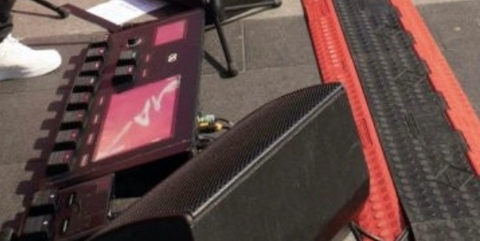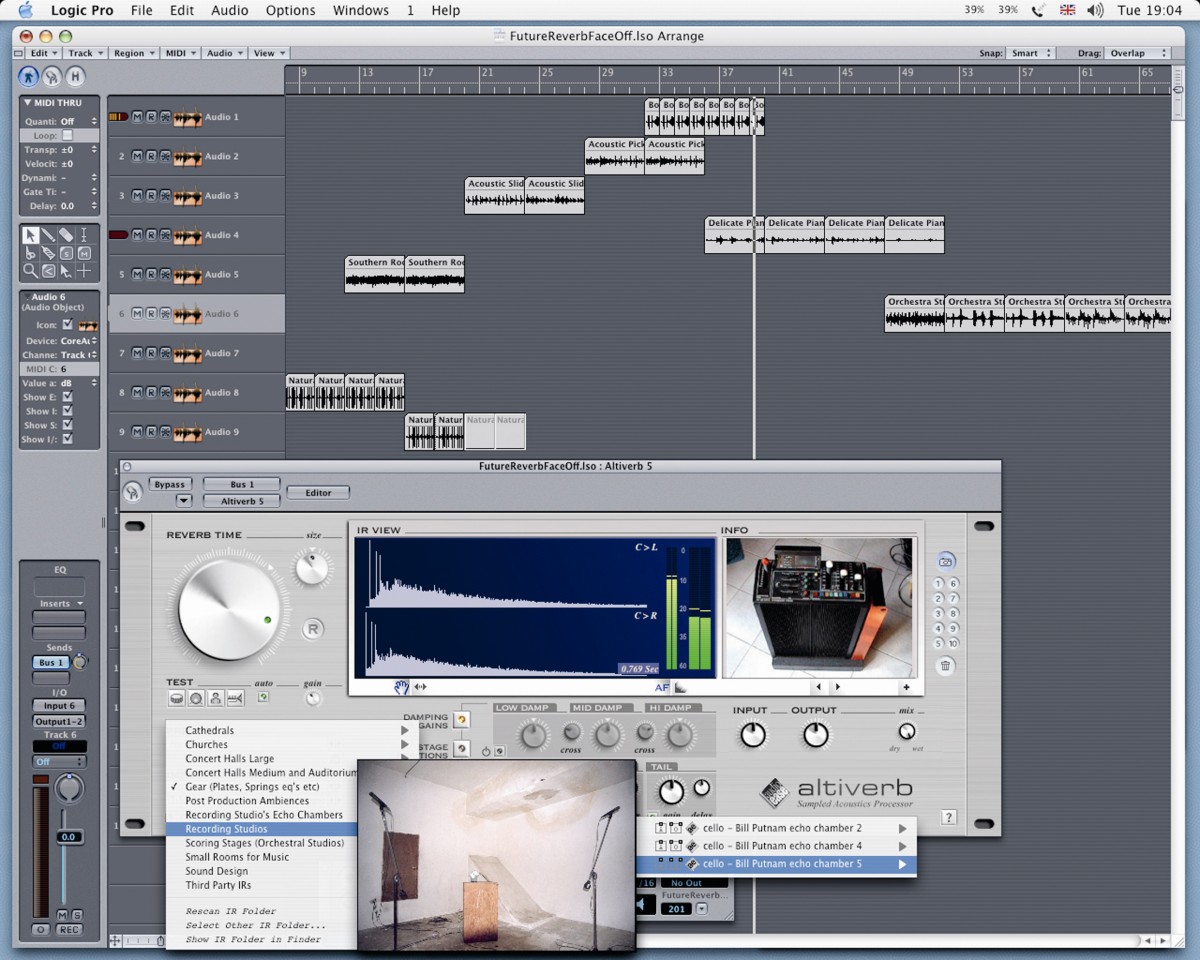MusicRadar Verdict
The jaw-droppingly gorgeous sound remains, but now with more control and more detail.
Pros
- +
Sensible interface design. Comprehensive EQ section. Expansive waveform manipulation.
Cons
- -
Lack of Logic parameter automation. Mac-only.
MusicRadar's got your back



Of all the convolution plug-ins available, Altiverb is probably the one most responsible for bringing the concept to people´s attention. Dutch developer Audio Ease first had its ‘Eureka!´ moment in 2001, when they realised that the Apple Mac´s G4 chip, with its AltiVec Velocity Engine, was capable of the kind of heavy-duty computation that convolution reverb demands.
Not soon after, Altiverb was born. And the people saw that it was good. Very good. Now, four versions on from its earliest incarnation as a MAS-only plug-in for use in Digital Performer, version 5 must fend off attacks on its market from all sides.
The most obvious change in Altiverb 5 is the look: it´s now silver-face rather than black-face, with a lot more knobs, buttons, drop-down menus and window displays. Apparently, Audio Ease planned to cram in even more new ideas, but common sense prevailed.
Fortunately, a sensible approach to interface design means you never feel swamped. For instance, the four separate Damping & Gains, Stage Positions, EQ and CPU sections occupy the same space; you simply select which to display via the radio buttons to the left.
Details
The Damping & Gains and Stage Positions options are both new to version 5. The three-band Damping section has separate gains and delays for a reverb´s Direct, Early References and Tail reflections, so you can control the timbre or use different sections of different reverbs to create your overall effect - one reverb for the early reflections, another for the body and another for the tail end.
This works well in conjunction with the Stage Positions feature, which enables you not only to position your musicians in a world-famous concert hall or recording studio, but also to arrange the players on this virtual stage for even greater depth and realism. The potential here for orchestral work is immense.
The EQ section has also been expanded, adding two middle bands with sweepable frequency and Q controls to the treble and bass of version 4. There are also new controls to
alter the room size, reverse the entire reverb and, to conserve CPU power, a Tail Cut dial.
Also new is the IR View window. It can show either a multi-channel waveform or a rotatable full-colour waterfall view, illustrating the reverb´s frequency content through time. Being able to rotate the waveform in three dimensions means you can study every aspect visually and adjust it accordingly.
Aside from these enhancements, Altiverb 5 is still a top-drawer convolution reverb plug-in, with hundreds of superb IRs supplied covering every kind of space imaginable - anything from a former brothel´s ping-pong room to the legendary EMT 140 plate unit. You can also ‘roll your own´ IRs (for use in Altiverb), courtesy of the IR Pre-Processor utility. It´s a slightly tricky process and relies on the quality of your recording equipment, but it´s perfectly feasible.
In use
Altiverb´s effect is always a revelation, beautifully enhancing whatever signal source you treat. It sounds simply as if your audio has been transported to whatever space you selected, with an incredibly lifelike transparency and spatial depth. Crucially, the reverb tails die away perfectly naturally, a sure sign of a well-honed algorithm.
Despite version 5´s new features, Altiverb is as efficient as ever. Some sequencer-specific issues do crop up, such as the fact that the Audio Units version, for use in Logic, doesn´t offer parameter automation. Instead, Audio Ease have added MIDI control for the same functions. It´s a little bit odd, but it works. It´s also reassuring to see that Audio Ease is snappy with minor bug fixes and refinements.
Really, the only drawback with Altiverb 5 is that it´s Mac-only, so a lot of musicians might never get to hear it - and to hear it is to love it. Ultimately, it´s the sound that counts and Altiverb 5 does an awe-inspiring job via its elegant, understated interface. Even the photos and VR movies are more than mere eye candy, giving useful visual and cerebral feedback on the captured spaces and gear.
For anyone considering the upgrade, it´s well worth it. On paper the features might not grab you, but version 5´s control, flexibility and user-friendliness leave version 4 in the shade.
MusicRadar is the number one website for music-makers of all kinds, be they guitarists, drummers, keyboard players, DJs or producers...
- GEAR: We help musicians find the best gear with top-ranking gear round-ups and high-quality, authoritative reviews by a wide team of highly experienced experts.
- TIPS: We also provide tuition, from bite-sized tips to advanced work-outs and guidance from recognised musicians and stars.
- STARS: We talk to musicians and stars about their creative processes, and the nuts and bolts of their gear and technique. We give fans an insight into the craft of music-making that no other music website can.

“He always had like this contemptuous smirk on his face whenever he was dealing with me like he thought I was a chimp or something”: White Lotus creator Mike White responds to the show’s composer’s claim that he’s quitting

Why Perry Farrell didn’t want Green Day on the Lollapalooza bill: “He was like, ‘They’re a boy band. I don’t want to book a boy band’”

Is this our first sighting of Ed Sheeran's top-secret new Looper X, as he continues his global busking jaunt?










